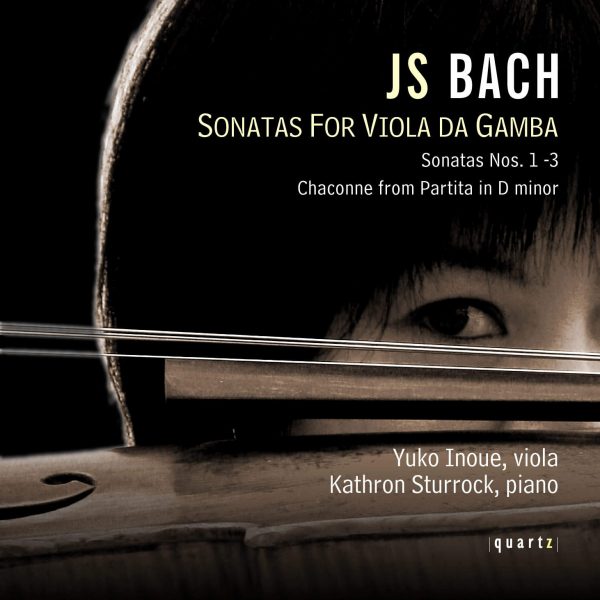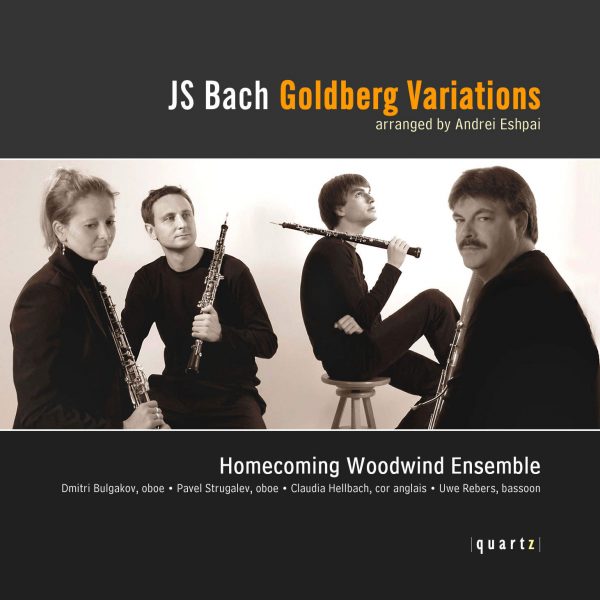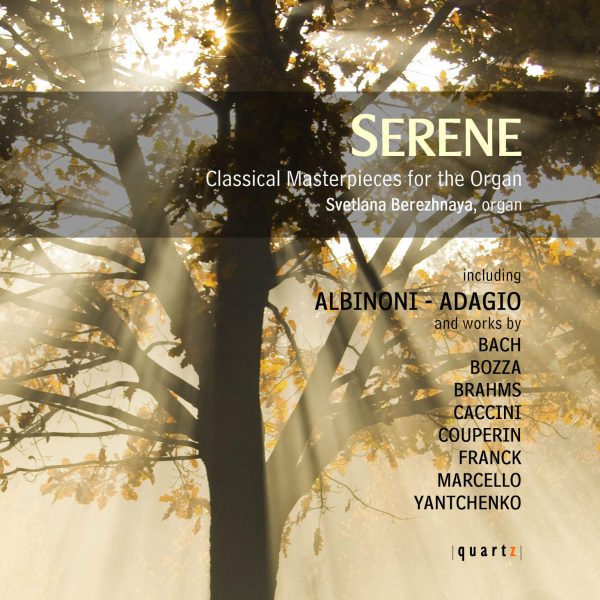J.S. Bach: Organ Works
£7.99 – £14.99
Bach’s devotion to the organ, and his desire to excel on it, is without question but whereas much of his output was written with a specific purpose or occasion in mind, the toccatas and fugues are less easily categorized. Almost all of them date from Bach’s Weimar years (1708-1717), when he had the most opportunities to play the organ, although he may have revised them in Leipzig (after 1723). Their elaborate nature belies the fact that Bach had to be careful about showing off: in 1705, while temporarily in Leipzig, he had been censured for an over-long organ prelude before Communion and in 1706 he had attracted the ire of the Arnstadt authorities by confusing the congregation with complicated chorale accompaniments. Organist Elena Privalova presents a program of these works, beautifully recorded at the Riga Cathedral.
About This Recording
It is refreshing to remember, when presented with the Romantic, 19th-century image of the composer as a divinely-inspired poet at the mercy of the Muse – an image which persists to this day – that J.S. Bach was an eminently practical man. Exceptionally hard-working and at times demanding, Bach was nevertheless flexible enough to adapt to his circumstances and the musicians with whom he had to work. He was devoutly religious, fiercely intellectual and with an earthy side, producing 20 children and imbibing plenty of coffee and beer and yet… Bach’s compositions, many of them produced as part of his ecclesiastical or educational duties, are so exceptional in their combination of depth and skill that it is difficult not to elevate him to some higher plane. He is credited with saying that anybody who works as hard as he did could achieve the same but that work ethic nurtured and developed an innate gift for and love of music, often manifested by the taking of existing forms to new regions of complexity and profundity.
As a young man in 1706 Bach famously walked 280 miles to Lübeck to see Buxtehude playing the organ. One of his sons, C.P.E. Bach, wrote in Bach’s obituary:
“At a certain moment here in Arnstadt he had so strong an urge to hear as many good organists as he could that he set out for Lübeck, on foot, in order to hear the famous organist of St Mary’s, Dietrich Buxtehude.”
Bach’s devotion to the organ, and his desire to excel on it, is without question but whereas much of his output was written with a specific purpose or occasion in mind, the Toccatas and Fugues are less easily categorised. Almost all of them date from Bach’s Weimar years (1708–1717), when he had the most opportunities to play the organ, although he may have revised them in Leipzig (after 1723). Their elaborate nature belies the fact that Bach had to be careful
about showing off: in 1705, while temporarily in Leipzig, he had been censured for an over-long organ prelude before Communion and in 1706 he had attracted the ire of the Arnstadt authorities by confusing the congregation with complicated chorale accompaniments.
Beyond Weimar, Bach’s opportunities to play the Toccatas and Fugues may also have been limited. In the prestigious role of cantor at the Thomasschule in Leipzig, a position he took up in 1723, Bach’s duties were wide-ranging. When it came to services at the Thomasskirche and Nikolaikirche, he would have been directing the choir and orchestra, sometimes from the harpsichord but he was not principally
an organist. Indeed, each church had its own designated organist: Christian Heinrich Gräbner at the Thomaskirche until 1729; J.G. Görner at the Nikolaikirche until 1729, then at the Thomaskirche; and Johann Schneider at the Nikolaikirche from 1729.
Even so, the list of duties given to Bach in 1723 mentions playing organ preludes at regular intervals throughout the four-hour-long Lutheran services, preceding chorales and larger choral works. The music that might have been played before and after the services was less formally outlined and may have extended to preludes and fugues, which built on the precedents of the Toccatas and Fugues. Nevertheless, it seems unlikely that Bach would have indulged in anything as showy as these works before or after a church service.
Perhaps the key to Bach’s composition of the Toccatas and Fugues lies in the fact that, alongside his pragmatism, he relished an intellectual challenge for its own sake. When, in 1747, Frederick the Great challenged Bach to extemporise a six- part fugue at the keyboard, something never before attempted as a composition let alone spontaneously, Bach went away and produced his extraordinary Musical Offering in two weeks, going way above and beyond the original challenge in the scope and complexity of his writing. The Toccatas and Fugues may have been a challenge he set himself; or, as with the Musical Offering three-part ricercar, written-down versions of improvised material.
Bach regularly ‘tested’ organs and a showpiece would have given an instrument a thorough workout. When in 1737 he visited Kassel for the examination and inauguration of the organ at the Martinskirche, he may well have played the
‘Dorian’ Toccata and Fugue in D minor, BWV 538. It was not only the organ that was under scrutiny during these tests; they sometimes acted as an unofficial audition. In 1703 the 18-year-old Bach was invited to evaluate the organ at Arnstadt’s Neue Kirche, after which he was offered a handsome salary to work there as organist and cantor. C.P.E. Bach recorded that the testing process involved assessing the instrument’s ‘lungs’: “To find out, he would draw out every speaking stop and play in the richest possible texture. At this the organ builders would often grow quite pale with fright.”
The Toccatas and Fugues do indeed produce “the richest possible texture”. Our programme opens with the Toccata and Fugue in F, BWV 540, in which the toccata shows the recent impact on Bach of Vivaldi’s concertos, with their motivic unification, driving rhythms and strong, structural contrasts. There may have been a substantial gap in composition between the toccata and the fugue; the former is estimated to date from around 1712 but the fugue is more vaguely dated as “before 1731”, although it is possible that they were conceived together. Combined, the effect of both sections is powerfully architectural. The tussling ideas of the Toccata include canonic imitation and bold harmonic statements such as its powerful interrupted cadence. The chromatic fugue that follows is particularly knotty: it is the only example in Bach’s organ works of a double fugue in which both subjects are fully worked before being combined in the glorious final passages.
The Prelude or Toccata and Fugue in E, BWV 566, probably dates from Bach’s stay in Lübeck; Buxtehude’s influence is palpable, not least in the sectional layout. The first section alternates manual or pedal cadenzas with rich suspensions and is followed by a fugue. Then comes a pedal cadenza and another fugue and the fifth and final section includes more ornate pedal work. Bach also transposed the work into C (BWV 566a) for use on meantone organs, on which E major sounded discordant.
Dating from his Weimar years, Bach’s Toccata and Fugue in D minor, BWV 538, is known as the ‘Dorian’ partly to differentiate it from the more famous D minor work, BWV 565, and partly because it was written without a key signature, which gives it the appearance of being in the Dorian mode. The piece is based on an insistent, recurring motif and, unusually, includes notated manual changes. The fugue resembles that of BWV 540 in that both are particularly structurally imposing, use quavers rather than semiquavers and include syncopation, suspensions and chromaticism. The works differ, however, in that the contrapuntal and harmonic devices used in BWV 540 contrast with the concerto- like manual exchanges in BWV 538.
The Toccata, Adagio and Fugue, BWV 564, is another, probably slightly later Weimar work (c. 1710–1717) and is particularly accomplished in its mature treatment of different styles. The introductory section features dialogue between manual and pedals, followed by thematic material that draws upon both Germanic and Italian styles. The German organ tradition is represented in sections such as the opening prelude-style passage with its dramatic pauses and pedal notes, although this is answered by something quite new and unique in Bach’s output: the longest pedal solo in the repertory. Like BWV 538 and BWV 540, the influence of the Italian Concerto is noticeable, both in the structure of this first movement, in which the manual or pedal solos are contrasted with contrapuntal ‘tutti’ sections, and in the pizzicato-like pedalwork and Italianate chromaticism of the second movement. This movement, Adagio–Grave, is unusual for its very existence; it was not the norm to include a slow movement in an organ piece of this type. The third movement is an impressive four-voice fugue culminating in an expansive coda characterised by rapid, fluid arpeggiated figures.
The Toccata and Fugue in D minor, BWV 565, ranks among the most famous of all classical works, its reputation helped by various more recent arrangements including orchestrations. Characteristic of the north German organ school, it probably predates Bach’s Weimar years (before 1708), although some have speculated that it was composed later. Apart from its powerfully rhetorical opening, the work is unusual, as it essentially consists of two toccatas (the second a coda) framing a four-voice fugue – although the texture is often thinned down to two or three voices or occasionally just one – which includes the unique feature of a solo pedal statement of the subject. Intricate echo effects and repetitions abound during the fugue, as do gestures that suggest the work originated as an idea for violin, possibly not even by Bach. The elaborate coda includes multiple tempo changes and is marked Recitativo, lending it the freedom of operatic speech-based rhythms, yet it concludes in a manner befitting a work of such imposing skill, with the solemn gravitas of a plagal cadence.
Track Listing
- Toccata and Fugue F major, BWV 540
- Toccata E major, BWV 566
- Toccata and Fugue D minor, BWV 538
- Toccata, Adagio and Fugue C major, BWV 564
- Toccata and Fugue D minor, BWV 565o




